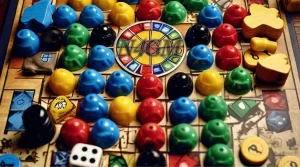Imagine a game that mixes golf’s precision, backyard fun, and social joy. That’s lawn golf. It’s an exciting sport for both seasoned players and curious beginners. Yet, starting can feel daunting.
Do you find yourself confused by lawn golf game rules or how it differs from traditional golf? You might be struggling to set up the game. Or, you may not understand the scoring.
Perhaps you want to improve your strategies to outplay your opponents. Wondering where to play or how to make the game a fun family or competitive event? You’re not alone, and this guide is here to help.
Learn the origins of lawn golf. Get tips and strategies to improve your game. This guide will transform your game experience. It will make it fun and rewarding. Ready to take your first swing? Let’s begin!
What Is Lawn Golf?
Lawn golf is a fun, simple version of traditional golf. It can be played in small spaces like backyards and parks. It is a version of standard golf. It uses shorter courses, making it great for casual settings. It’s perfect for families, beginners, and social gatherings.
The goal is like traditional golf: hit a ball into a target in as few strokes as possible. The targets can be small holes, hoops, or even improvised objects like buckets or cans. It keeps golf’s precision and strategy. It removes the need for specialized courses or equipment.
The Origins
This lawn game has a debated history. It blends traditional golf and backyard games. It is believed to have originated in Europe. There, the elite adapted traditional golf to smaller, private gardens.
1. From Golf To Lawn Golf
This game originated in 15th-century Scotland, the birthplace of golf. Wealthy estate owners built mini golf courses on their lawns for fun and practice. Over time, the game became a popular, informal pastime for families and social groups.
2. Victorian Influence
During the Victorian era, it gained popularity as a genteel recreational activity. Garden parties often included games like lawn golf to entertain guests. The game was simplified to suit smaller spaces and played with lighter, wooden clubs.
3. Modern Adaptations
The 20th century saw a rise in recreational sports. Lawn golf evolved into its current form. Manufacturers began producing specialized lawn golf kits, making the game more structured. Today, it is celebrated as a family-friendly and versatile alternative to traditional golf.
4. Fascinating Historical Facts
- The first mention of this game was in a 1768 Scottish journal. It described a nobleman’s attempt to create a “golf-like” experience at home.
- Early versions of the game used hand-carved wooden balls and clubs. Local artisans made them.
- In 1875, a British manufacturer made the first commercial lawn golf set. It included clubs, balls, and metal hoops.
Rules & Gameplay
Playing this is easy to learn and adaptable for any skill level. Follow these steps to learn the rules and set up a fun game for all.
1. Setting Up the Game
- Choose a Playing Area:
- Select a flat and open space, like a backyard, park, or garden.
- Ensure the area is free of obstacles like rocks or holes that could cause injury.
- Mark the Course:
- Create 6-9 holes (or targets) using buckets, cups, or small hoops.
- Place the targets at varying distances to make the course challenging.
- Set a Starting Point:
- Decide a spot where all players will begin each round.
- Equipment Needed:
- Balls: Lightweight golf balls or plastic balls work best.
- Clubs: Use plastic or wooden clubs. You can also improvise with everyday objects.
- Markers: Use flags, cones, or chalk to define the course boundaries.
2. Lawn Golf Game Rules
Objective
- Hit the ball into the target in as few strokes as possible.
Order of Play:
- Players take turns based on a coin toss or drawing lots.
- In subsequent turns, the player farthest from the target plays first.
Scoring:
- Each hit of the ball counts as one stroke.
- The player with the lowest total score after completing all holes wins.
Out-of-Bounds Rule:
- If a ball goes out of bounds, return it to the last spot it was played from with a one-stroke penalty.
Tie-Breaker:
- In case of a tie, a “sudden death” round can be played with one hole.
3. Step-by-Step Gameplay
Step 1: Tee Off
- Start at the designated starting point for the first hole.
- Each player takes one stroke to hit the ball toward the target.
Step 2: Continue Playing
- After all players have taken their first stroke, the one farthest from the target plays next.
- Keep taking turns until the ball lands in the target.
Step 3: Complete the Hole
- Once all players have sunk their balls into the hole, record the number of strokes each took.
- Move to the next hole and repeat the process.
Step 4: Tally Scores
- After all holes are completed, add up the scores.
- The player with the lowest cumulative score wins the game.
4. Optional Variations
Timed Play
- Set a time limit for each hole. If a player exceeds the limit, they receive a penalty stroke.
Creative Targets
- Use objects like tree stumps, flowerpots, or even cardboard cutouts as targets for added fun.
Obstacle Challenges
- Add obstacles like cones, water bottles, or sand pits to increase the difficulty.
Conclusion
It blends strategy, enjoyment, and exercise in one excellent package. Whether you’re playing with friends or practicing alone, it’s a terrific way to unwind. With this guidance, you’ll be prepared to take on any lawn golf course with confidence.







